SUSTAINABLE HELP
A single solar system can sustainably improve the life of an entire family
For this reason we have founded the non-profit association SunHelp International e.V. in 2014. We realize international aid projects through the use of solar energy and support people in developing countries through a sustainable energy supply. In this way we offer direct help for further self-help!
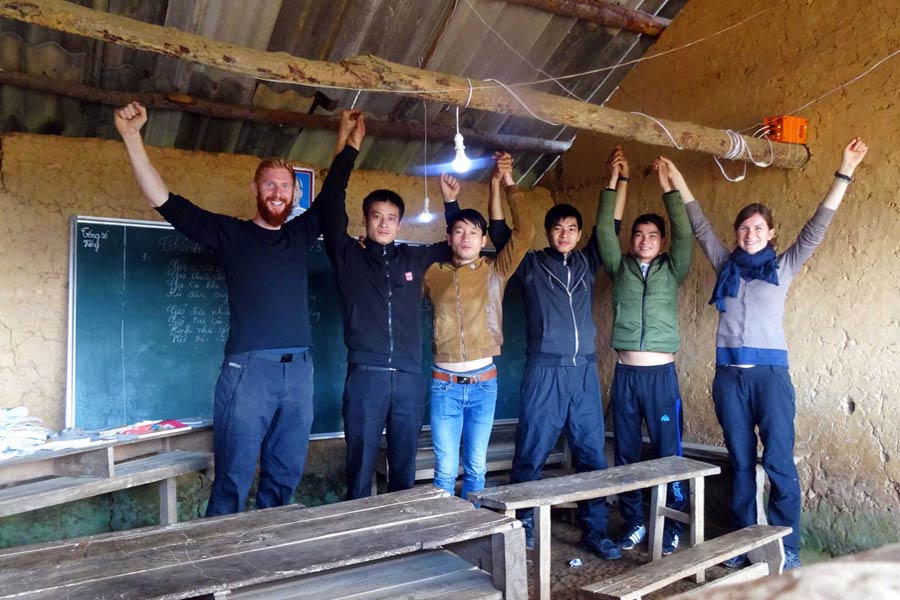
More than 16% of the world's population still live without access to the electricity grid, that's 1.2 billion people. Most of them live in rural areas. The people in the poorest regions of the world are particularly hard hit:
Sub-Saharan Africa, Bolivia, the Indian subcontinent, Afghanistan, Cambodia, Nepal, the Philippines, Mongolia...
.
In many developing countries, the rural electrification rate is still below 20%. That means four out of five people don't have electric lights! Current figures also show the unequal distribution between urban and rural regions. Due to the lack of capital and a lack of engineering knowledge, the expensive and lengthy expansion of infrastructure such as power grids and power plants is in most cases economically not viable for the operators.
.
These people are left in the dark.
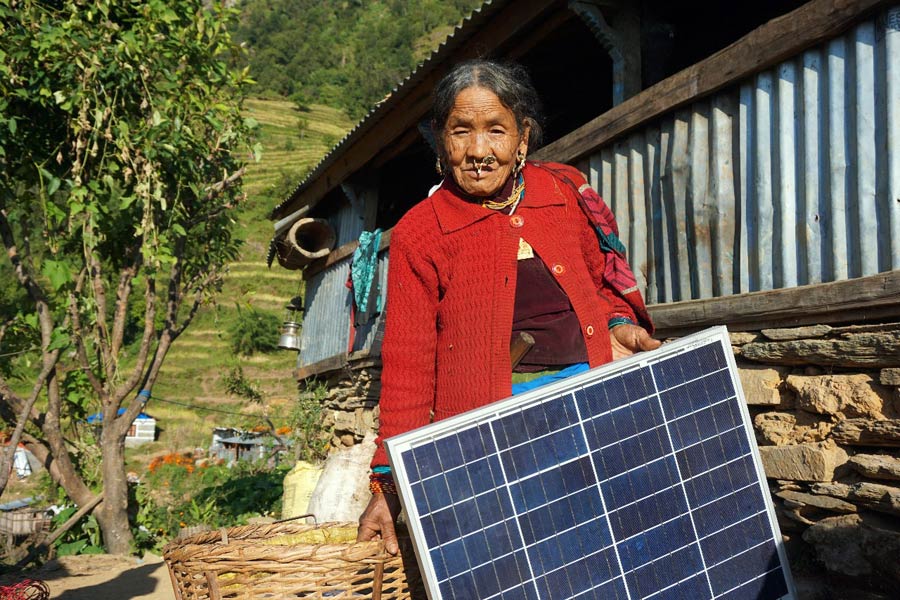
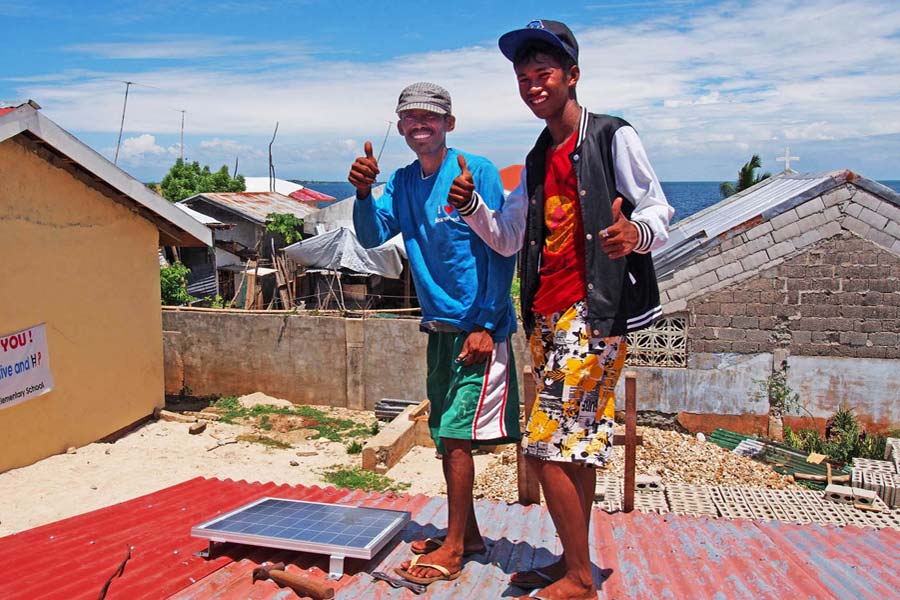
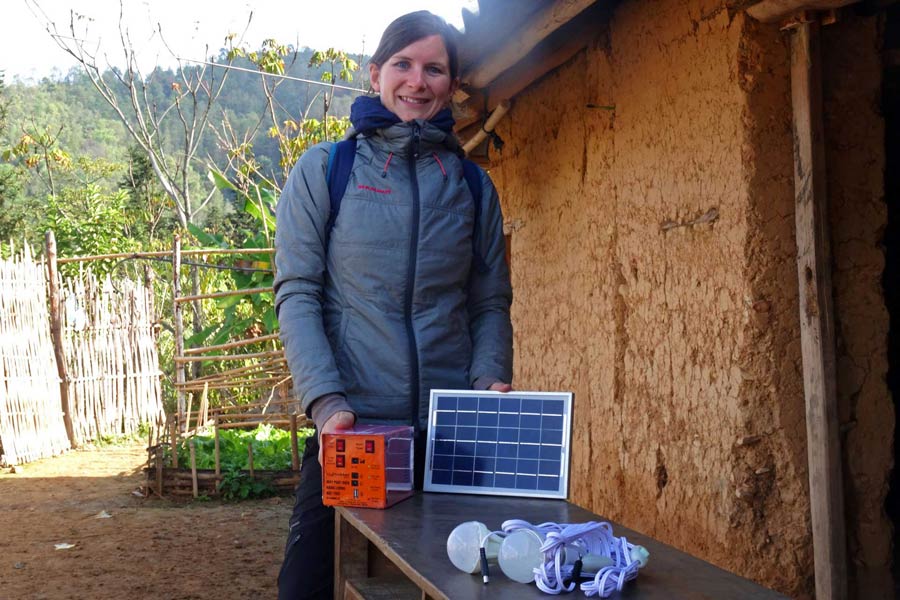
![]()
We offer local support to people in developing countries – in the form of a sustainable energy supply.
What do we want to achieve and why?
Our motivation and goals at a glance
It's about a holistic approach.
Solar energy can produce so much more than "just" clean light. The indirect consequences of electric light are enormous: Educational opportunities, health benefits, financial help, environmental & climate protection and much more! Here you will find the most important reasons for our voluntary work and the resulting goals.
1. Increasing educational opportunities: offering children a better future.
2. Improve health: reduce Hazardous Emissions.
3. Fighting poverty: saving energy costs.
4. Ensure basic medical care: support emergencies.
5. Increase safety: replace fire with light.
6. Protecting the climate: delivering clean solar power.
7. Promote social life: light brings people together.
1. Increase educational opportunities for a better future
Even today, many children in developing countries have to work hard to support their families in their daily struggle for survival. More than 200 million children are affected worldwide. [1] They work in fields, garbage dumps, in quarries or even in mines. The only way for them to get an education is early in the morning before work or in the evening, after sunset.
A life without electric light means that they either have to learn, play or do homework with the help of noxious kerosene lamps - or just sit in the dark. In Africa alone, 90% of primary schools are not connected to the electricity grid, as are almost 30% of schools in rural India. [2]
Equipping schools, classrooms and private homes with clean light directly improves these children's educational opportunities and their prospects for a better future.
.
One of our central goals is to bring light into classrooms with the help of solar energy. We want to promote reading and learning and enable effective classes even after the sun has set.
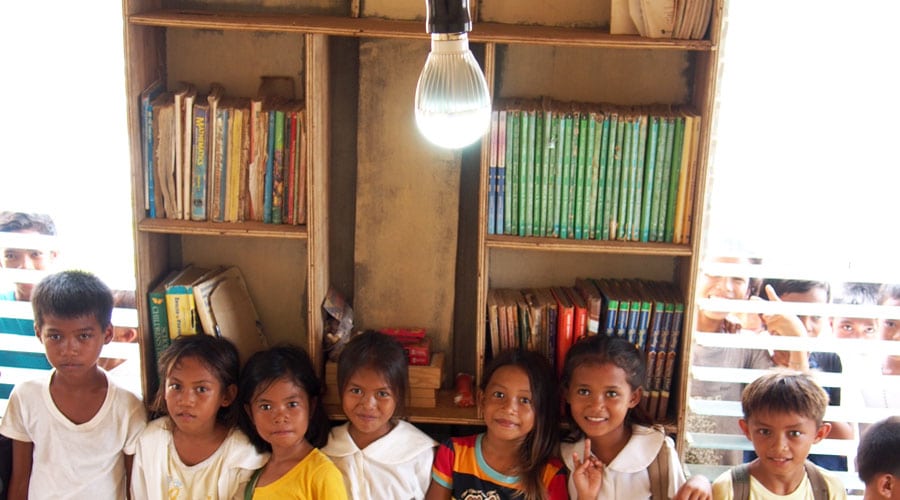
Kindergarten on Panitugan, Philippines

Classroom in Nisur / Bartang, Tajikistan
Recent studies show that the literacy rate is particularly low in countries with a lack of electricity. There is a clear connection between the level of education and access to energy in developing countries! [3]
2. Improve health: reduce hazardous emissions
Over 90% of all households without electric lighting use kerosene lamps as the primary light source for lack of alternatives. That's almost 1 billion people worldwide! [4] A daily use of three to five hours is equivalent to the pollution from two packs of cigarettes a day. Women and children are most affected.
Nitrogen oxides, sulfur dioxides, carbon monoxide and other emissions cause serious eye and lung diseases. A shocking consequence is that over two-thirds of women dying of lung cancer in developing countries are actually non-smokers... [5]
.
For this reason we want to replace as many kerosene lamps as possible from households with long-lasting LED lamps. Solar energy offers a perfect opportunity to reduce or completely eliminate harmful emissions in the home.
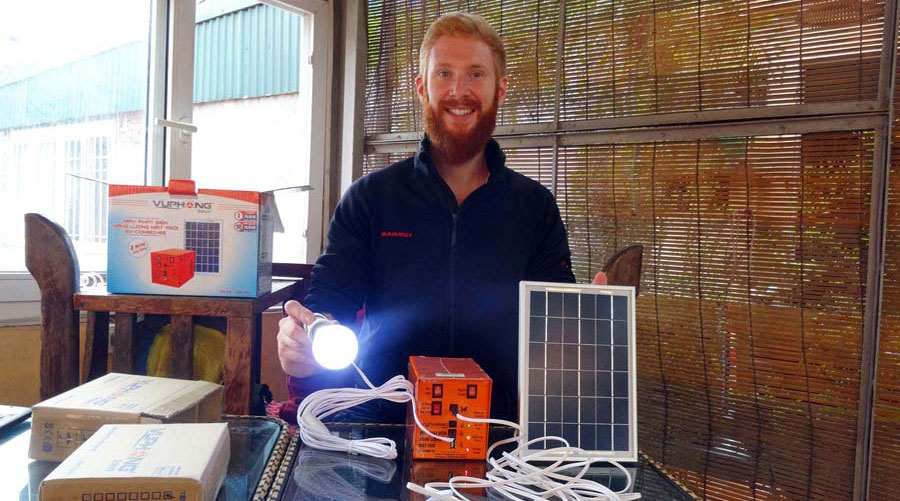
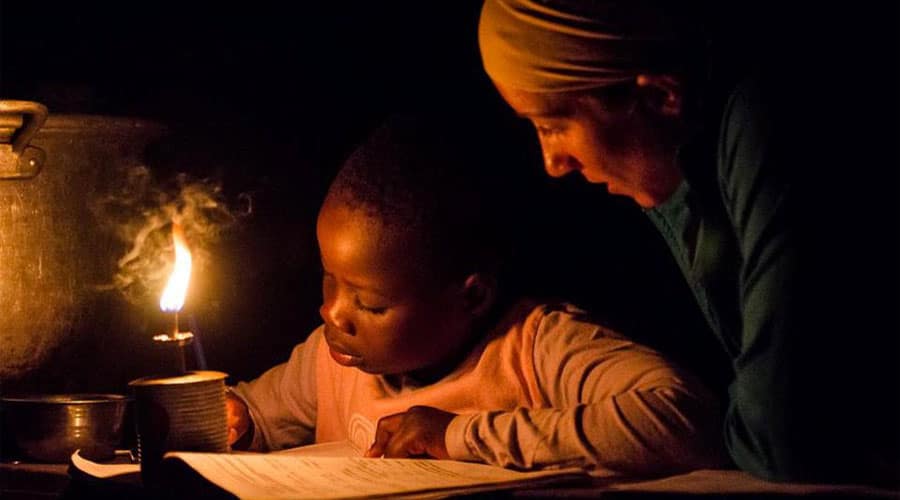
Diseases caused by kerosene lamps such as respiratory diseases, leukemia and pneumonia kill over a million children every year! [6]
3. Fighting poverty: saving energy costs.
In Africa and South Asia, where the majority of people live without access to electricity, a family must spend approx. 25% of their total monthly income on inefficient lighting, such as kerosene, candles or disposable batteries. [7] In some countries south of the Sahara, this proportion is as high as 40%! It is estimated that in Africa alone the poorest segment of the population spend yearly four billion USD on kerosene lighting [8] - an enormous sum that is then no longer available for other purposes.
Since kerosene lamps require new kerosene as fuel at regular intervals, the costs no longer decrease even after the lamps have been purchased. On the contrary: the kerosene prices are in rural areas of the world up to 35% more expensive than in urban areas. [9] In addition, people are helplessly at the mercy of the fluctuating market prices...
.
We want to give people living in poverty the chance to use their low income for more food, better education and basic medical care through a free and long-lasting energy alternative. Through the use of solar energy, those affected have more money available every month.
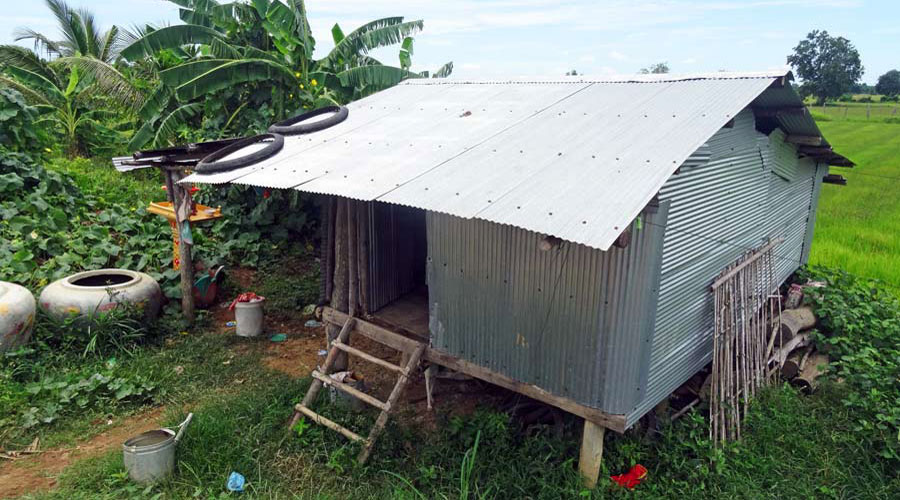
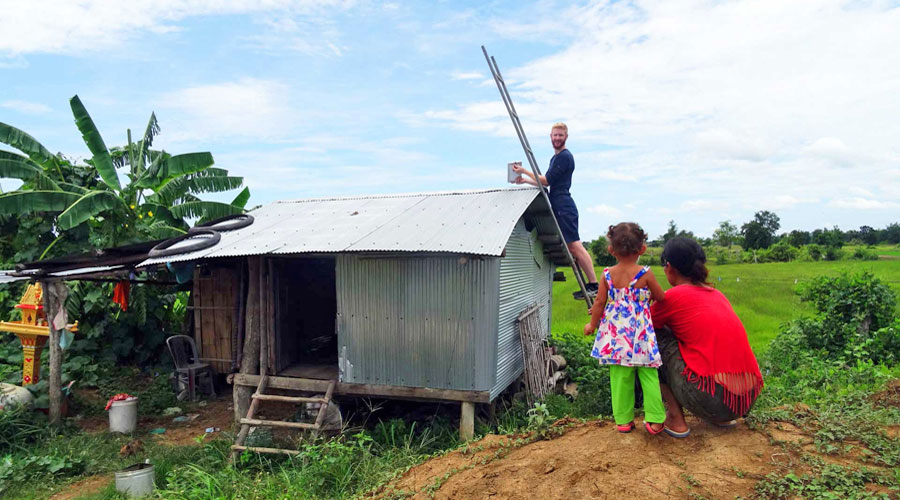
Many of the affected people live below the poverty line as defined by the World Bank of €1.75 per day. Thus, every saving in energy costs has a significant, positive impact on the financial situation of these families in everyday life.
4. Enable basic medical care: support emergencies
Medical care in many rural areas of developing countries is inadequate and is made more difficult by frequent power cuts or a complete lack of electricity.
The installation of solar systems ensures that medicines, blood samples and vaccines can be cooled and that treatment rooms are illuminated. In addition, solar energy can be used efficiently to produce clean water (via water pumps and filter systems) and the emergency communication through mobile phone charging options.
.
Being able to rely on the lighting, water supply or telecommunications during critical interventions, operations or births is extremely important in our opinion. Therefore, we also want to use solar energy to improve basic medical care!
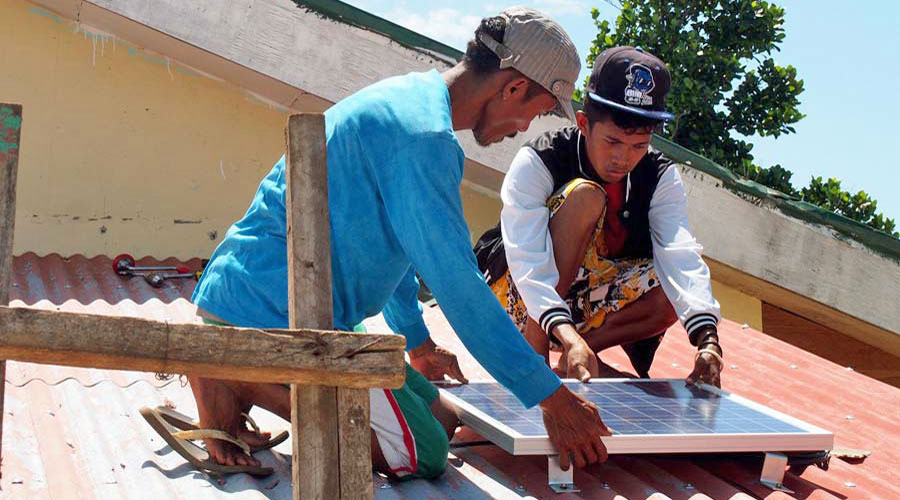
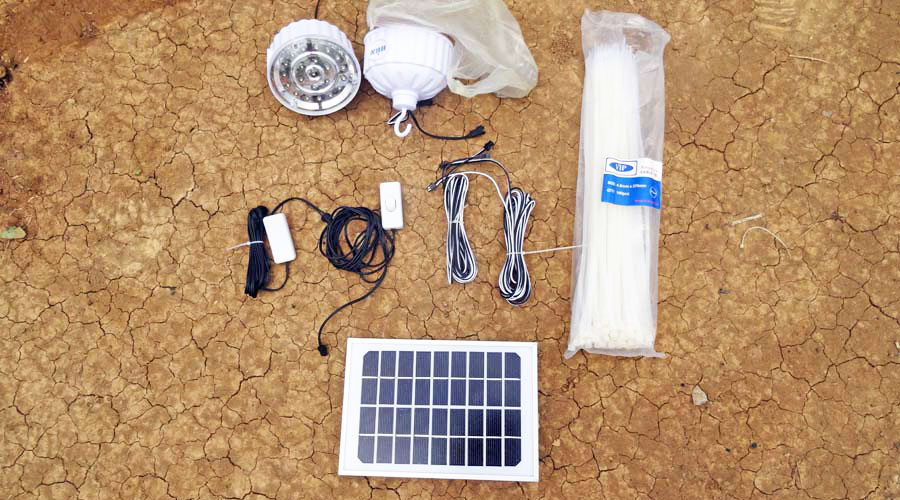
Especially for small rural health stations and rural birth centers, a solar system offers valuable medical advantages. [10]
5. Increase safety: replace fire with light
Kerosene lamps used to illuminate indoor spaces always pose a potential hazard. The already small and cramped dwellings of poor families are in many cases merely made of wood and cardboard and therefore at high risk of fire. Every year, more than 270,000 people in developing countries die from house fires. [11]
Small children in particular are not protected from burns by accidentally knocking over such lamps. [12] In Bangladesh, more than 170,000 children are seriously injured by kerosene lamps every year. In India, over 1,000,000 people are moderately or severely burnt every year! [13]
.
Kerosene lamps endanger the lives and health of people in developing countries. Small children in particular suffer severe burns and injuries. That's why we want to use solar energy to bring some security into the houses and huts of these families!
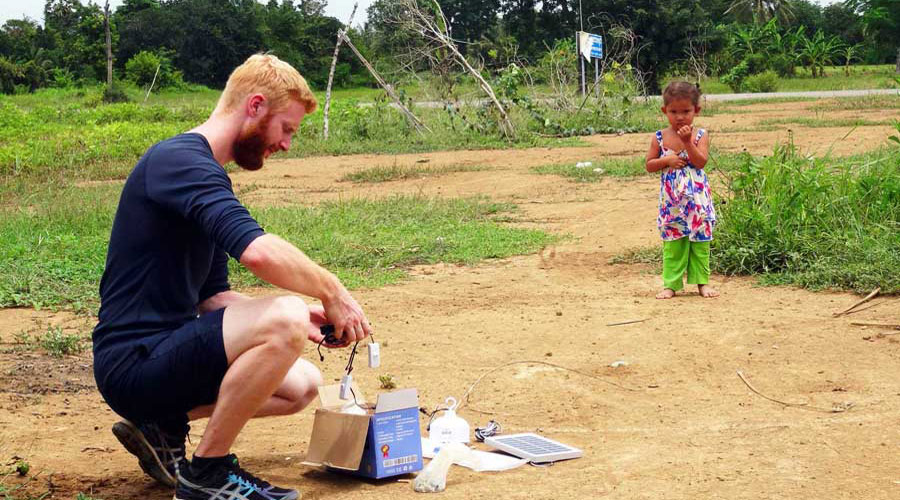
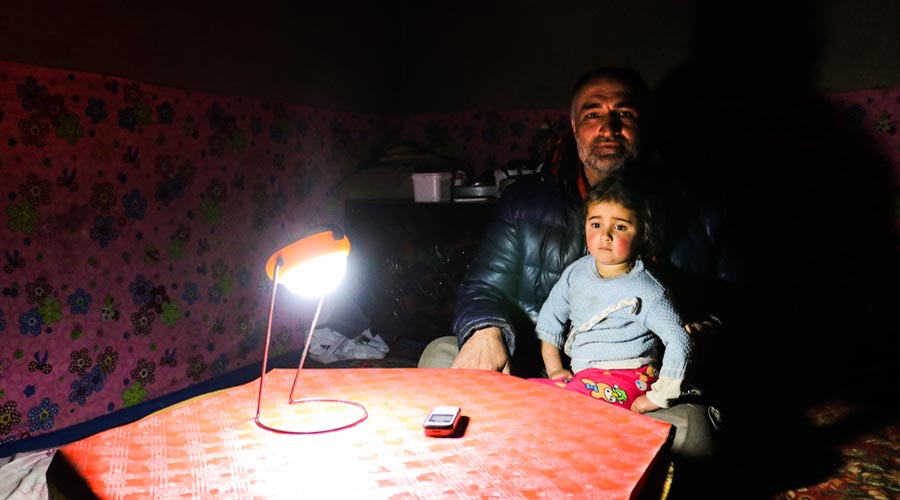
The use of small solar systems provides safe lighting and does not pose any danger to children. The LED lights reach only 60 to 80°C, even after a long period of use .. [14]
6. Protect the climate and the environment: deliver clean solar power
When kerosene is burned, a lot of pollutants are produced: Formaldehyde (HCHO), Nitrogen Oxide (NO) & Dioxide (NO2), Sulfur Dioxide (SO2), Carbon Monoxide (CO) & Dioxide (CO2). [15]
In addition to all these emissions that are harmful to the environment and health, fine dust and highly toxic fine dust are also emitted into the lungs of those affected and into the atmosphere. In addition to the well-known CO2, the so-called "Black Carbon" is an extremely climate-damaging substance. [16]
.
Global warming and climate protection concern us all! The continuous use of fossil fuels as an energy source brings with it a multitude of serious environmental and climate problems. That is why we are committed to an environmentally friendly and sustainable energy supply in developing countries!
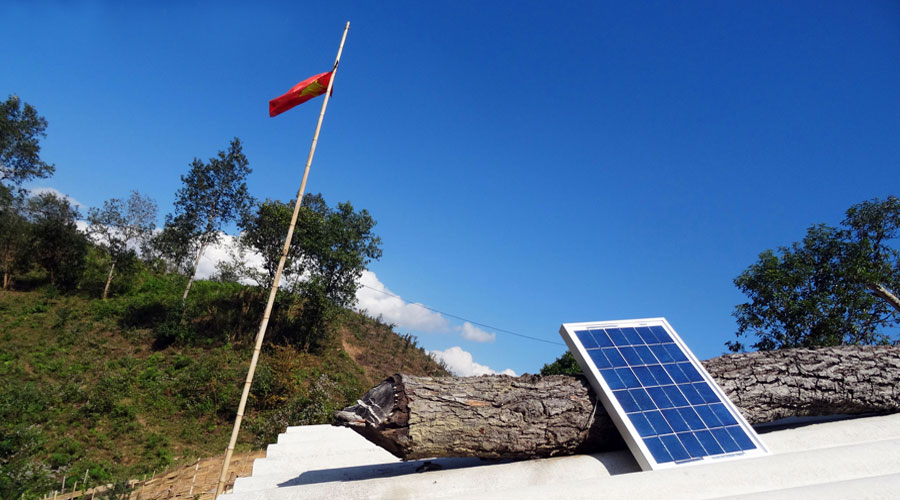
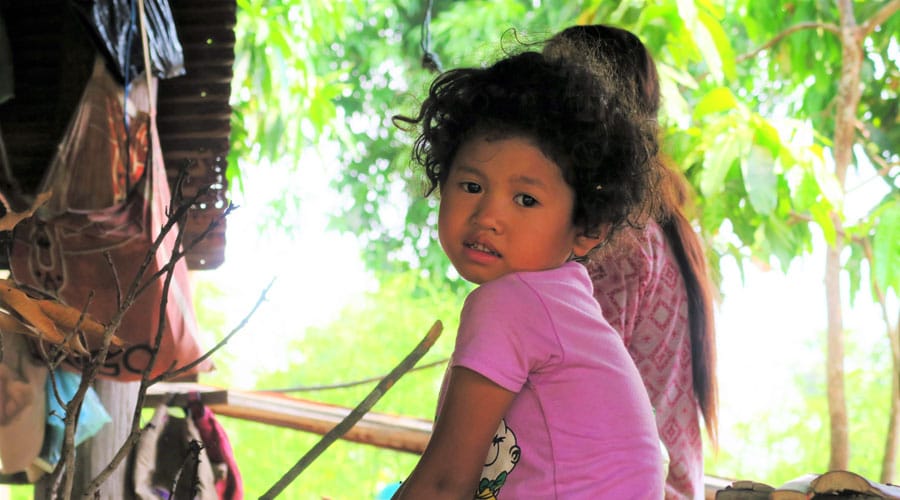
A staggering 270,000 tons of black carbon is thrown into the atmosphere every year just from the use of kerosene lamps in developing countries. This amount corresponds to the global warming output of almost 240 million tons of CO2. [17]
7. Promote social life: light brings people together
A lack of power supply impedes economic and social development. When the sun goes down, the day ends for many people. It is precisely these hours that are so important for family life and for the village community.
Often in the evenings, when sitting together, handcrafted products are made for sale, important things are discussed and social bonds are strengthened.
.
We have seen many times that the houses we equipped with solar light have become important community spaces. Light not only changes the lives of individual families, but also has a positive impact on the progress of entire villages!
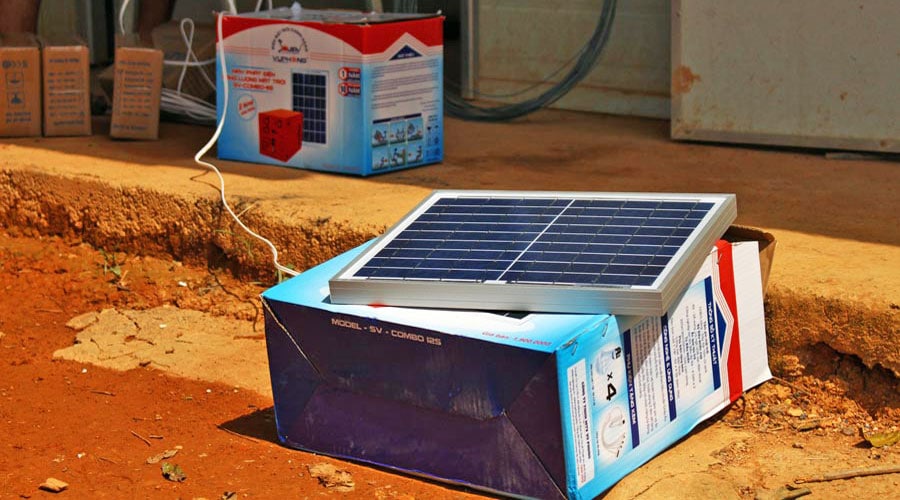
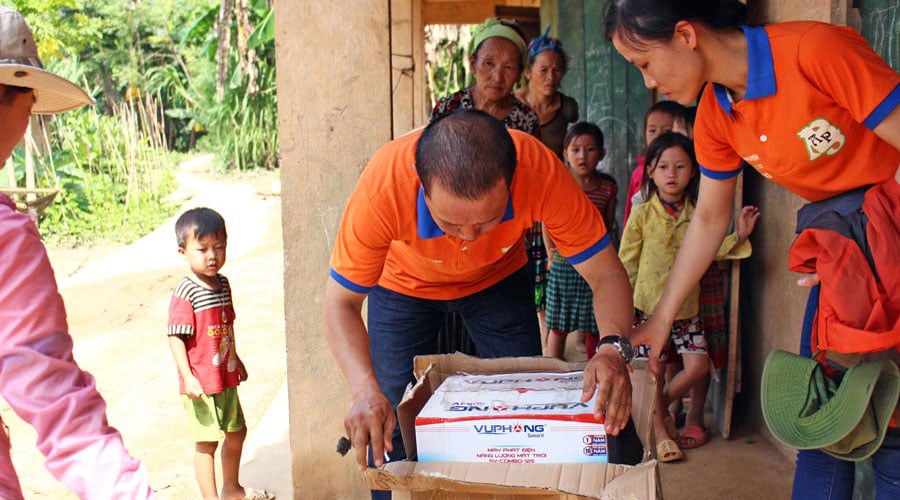
Electric light brings people together even after sunset and promotes social life!
HELP US BRING LIGHT INTO THE DARK
In our perspective, 1.2 billion people without electricity is no longer a mere statistic. For us, poverty has been given a face. We have seen how people live, we have heard their stories and we know: Every single solar system is a great help and a step in the right direction! Clean light gives hope, increases educational opportunities, brings safety and protects the environment.
Want to know more about our NGO processes? See our 10 steps to sustainable success - this is how we work!
We need your support: Help us to bring light into the darkness! On behalf of all those affected, we say thank you from the bottom of our hearts.
Sources
[1] Internationale Arbeitsorganisation (ILO): Kinderarbeit - schufften, um zu überleben (Grafik), 2005. Link zur Quelle
[2] UNDESA: Electricity and Education, 12/2014. Link zur Quelle
[3] M. Kanagawa, T.Nakata: Assessment of access to electricity and the socio-economic impacts in rural areas of developing countries, 06/2008. Link zur Quelle
[4] RWI Economic Papers: Accidents Caused by Kerosene Lamps, 02/2017. Link zur Quelle
[5] Lights for Life: The Impact of Lighting Poverty on Children. Link zur Quelle
[6] T.London, L.Hart et al.: Business Strategies for the Bottom of the Pyramid, 08/2011. Link zur Quelle
[7] UNEP: Developing Effective Off-Grid Lighting Policy, 05/2015. Link zur Quelle
[8] T.London, L.Hart et al.: Business Strategies for the Bottom of the Pyramid, 08/2011. Link zur Quelle
[9] Lighting Africa, IFC: The True Cost of Kerosene in Rural Africa, 04/2012. Link zur Quelle
[10] Global Off-Grid Lighting Association: Off-Grid Solar and Improvements in Rural Maternal Health, 08/2016. Link zur Quelle
[11] Rainbow Power Company: Fuel Based Lighting. Link zur Quelle
[12] N.Lam, K. Smith: Kerosene - A Review of Household Uses and their Hazards, 05/2013. Link zur Quelle
[13] Weltgesundheitsorganisation WHO: Burns - Fact Sheet, Updated 08/2017. Link zur Quelle
[14] W.Messer: Der „Tc-Punkt“ von LED-Lampen, 08/2012. Link zur Quelle
[15] V.Trollinger: Kerosene Use in the Developing World – Part Two: Flames, Fumes, and Fatalities, 08/2016. Link zur Quelle
[16] Center for Climate and Energy Solutions: What is Black Carbon?, 04/2010. Link zur Quelle
[17] Ecologic Institut Berlin: Black Carbon Emissions from Kerosene Lamps, 11/2013. Link zur Quelle

